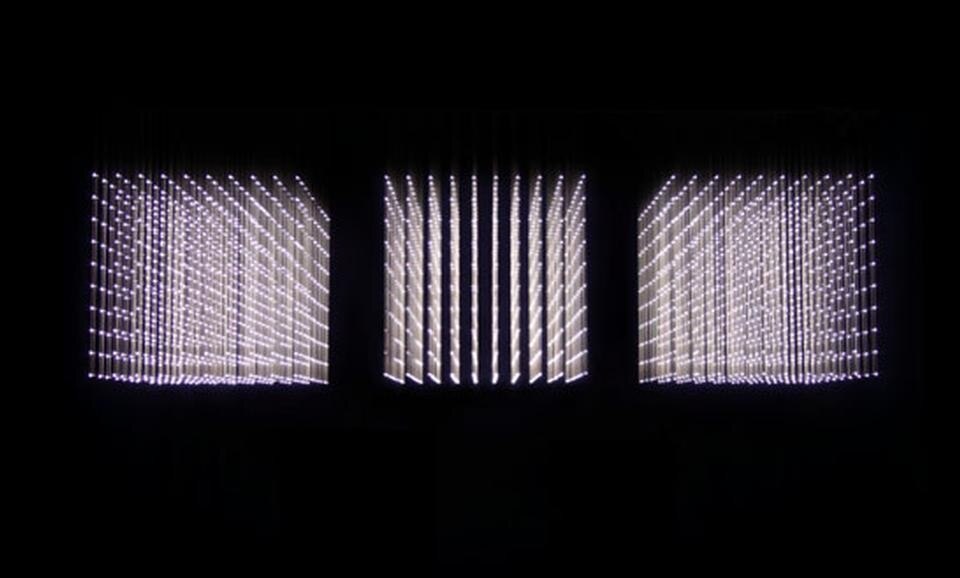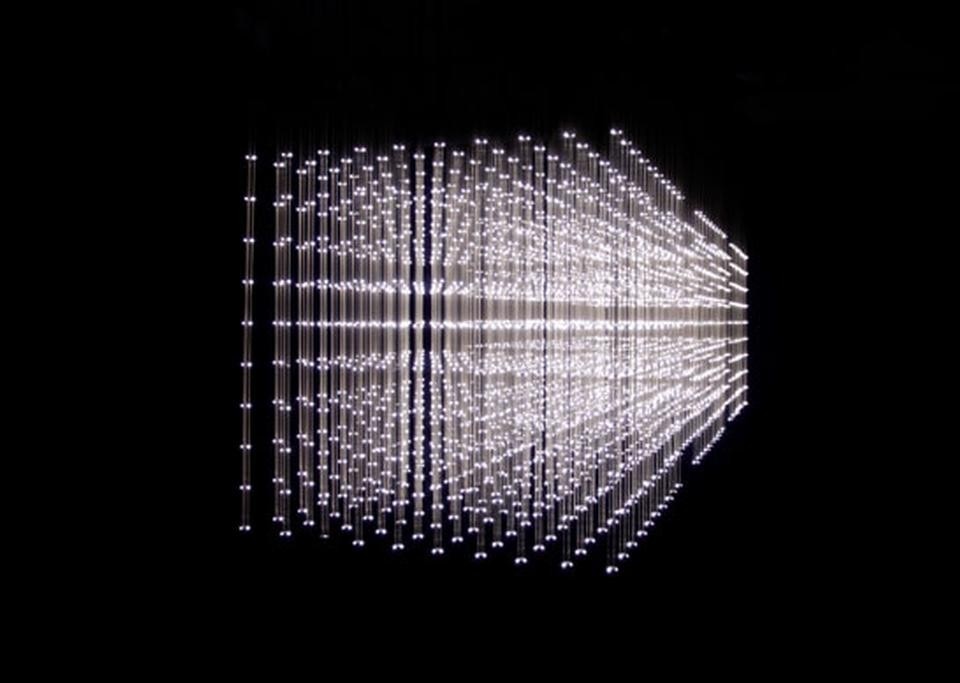How has your practice evolved technologically over eight years of practice?
We started out experimenting with technology to build smaller objects like our PixelRoller and Temporary Graffiti installation, which made it necessary that we acted more like performers rather than artists or designers. Now our installations can perform by themselves. From the creation of ephemeral temporary experiences, we're moving towards entire environments allowing a more permanent manifestation of our approach.
How are you reinterpreting the 'cold' nature of digital-based media?
We're looking for different ways to approach the digital, still seen as inaccessible. Interfacing with a mouse and keyboard lacks the warmth and quality of an analogue experience which we regard as 'human' or 'real'. But now people in their everyday life and behaviours are more and more influenced by increasingly immersive interfaces to the digital part of their own life.
How will digital media will have a much more physical quality in future?
Technology is becoming less tangible; we're not storing data in a physical file, on a bulky zip disc or on a hard drive wired to our computer anymore, but in a 'cloud'. The devices we use to access such data are now smaller and mobile. Via sensors and technology that processes sensory input, intangible digital space converges with our physical environment. People using an iPad or a Nintendo Wee - looking like they are being operated by the object - exemplifies this 'physical quality of digital media'. Our physical surroundings are increasingly able to compute our presence and react to us, and in turn enable us to engage with the digital world in a much more physical way.
You seem to be permanently prototyping and experimenting with the process of self-engagement and what constitutes an 'image of ourselves'. You ask at what point does our cerebral perception of such an image turn into direct experience of the 'self', and what this recognition does to us? How do you build this into your work?
We find that some kind of representation of our presence is needed to create the possibility for an emotional relationship between ourselves and an object or space. Traditionally the simplest and most analogue means is the mirror. We're interested in the development away from the pixel or static mirror image towards a kinetic, behavioural representation of the viewer.
Do architects, artists and designers need to create environments that integrate the digital and the analogue world through physically reactive spaces that feature some sort of basic 'behaviour'?
Yes, because it's necessary in order for us to stay connected to ourselves. We can't just keep our heads in the 'cloud' - it's ultimately too abstract. We want to translate what we see emerging in the interaction with small objects into a larger, ultimately architectural scale, to make whole environments capable of engaging a viewer on a physical and instinctual level.
What's coming up next?
With Carpenters Workshop Gallery and Incubator we are working on new kinetic and other light pieces. Some we will present at the next Design Miami (opens 30 November). We are also designing the set for Far, Wayne McGregor/Random Dance's new production, Sadler's Wells, London in November.



